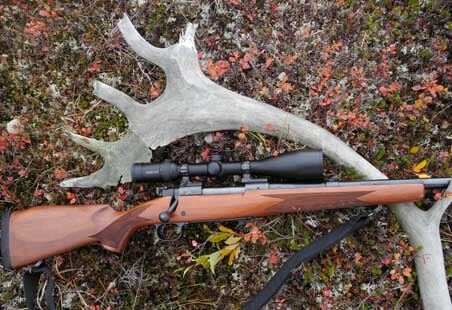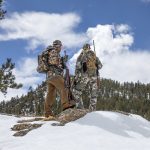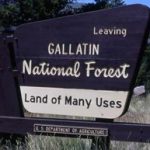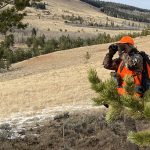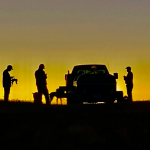Hunting is by far the largest funding mechanism for wildlife, and the economic benefits go far beyond conservation.
Gifford Pinchot, first chief of the United States Forest Service and the twenty-eighth governor of Pennsylvania, famously declared, “Unless we practice conservation, those who come after us will have to pay the price of misery, degradation, and failure for the progress and prosperity of our day.”
While many of us now accept the truth in this, it is imperative we also recognize that conservation is not free. There is a price to pay for the management, protection, and enjoyment of our natural world. Wildlife abundance is no accident, and it isn’t free, either. Somebody, somewhere, pays the bills.
While there are many institutions that play a role in conservation, state agencies in the United States are on the front lines. Yet, despite the fact that the average U.S. state wildlife agency requires a budget of $40 million annually to operate, it seems the American public remains largely unaware or indifferent to the costs of conservation. Citizens certainly benefit from the conservation services state agencies provide, but seldom is there public recognition for how the agency staff and programs are funded. It is time this was recognized.
The current system of funding for U.S. state conservation programs relies heavily, though not exclusively, on expenditures by hunters, and anglers. On average, more than half a state agency’s budget comes directly from sales of hunting and fishing licenses or other user fees. How much money are we talking about? Well, in 2015, there were approximately 35 million hunting licenses, tags, permits, and stamps sold in the United States at a cumulative cost of $821 million. The great bulk of this money went to conservation, in one form or another.
It is true that approximately one-quarter of the average state wildlife agency’s budget comes from federal funding. However, this funding is almost entirely provided by the Pittman-Robertson Act (Federal Aid in Wildlife Restoration Act of 1937), which imposes an 11 percent excise tax on the sale of firearms and ammunition products. Since 1939, $10.1 billion of these tax dollars has been awarded to states in support of conservation initiatives. When combined with contributions derived from angler taxes via the dedicated Dingell-Johnson Act of 1950 and the Wallop-Breaux Amendment of 1984, this number increases to an impressive $18 billion dollars in direct funding for state conservation efforts. Can anyone name any other source of conservation dollars that even approaches this?
But that is not the end of the story. Tax contributions and user fees aside, it is estimated that American hunters contribute an additional $400 million dollars per year to wildlife conservation through membership dues and donations to organizations like DSC, the Wild Sheep Foundation, Pheasants Forever, Quail Forever, Rocky Mountain Elk Foundation, and many others.
No other country in the world has such conservation funding mechanisms in place. Nor does the United States itself have an alternative mechanism to replace these funding sources, should they decline or disappear. This is not to say that other citizens do not financially support conservation; they certainly do. What it does say, however, is that hunters (and anglers) make enormous contributions and have been doing so for a very long time. This fact ought to be acknowledged, if for no other reason than to provide insights as to how other communities might be incentivized to financially support wildlife conservation programs.
While the numbers quoted are impressive, the economic significance of hunting and angling extends far beyond conservation itself. Overall, hunting in the United States generates $25 billion dollars in retail sales and more than $17 billion dollars in salaries and wages each year, while creating sales tax, and state and federal income tax revenues for government agencies and public services of all kinds. American hunters spend $5.3 billion dollars each year on hunting-related travel, $6.4 billion on hunting equipment, and $8.4 billion on other, related, “big-ticket” items. All things combine for an annual expenditure of $2,800 per hunter. Economic multipliers may be used to estimate the compound rippling effect of these expenditures, showing an economic impact of more than $86.9 billion dollars a year to the U.S. economy.
These numbers are incredible, of course, and comparisons with other economic drivers help put them in perspective. The Congressional Sportsmen’s Foundation reports that sportsmen and women spend $605 million a year on hunting dogs, which is more than skiers spend on ski equipment, and that the annual federal income tax revenue generated by hunter spending could cover the annual salaries of 100,000 U.S. Army troops. Between 2006 and 2011, USFWS reports that the number of hunters in the U.S. increased by 9 percent. However, in the same time frame, spending on hunting-related products and services grew by more than 30 percent. As an economic driver, therefore, hunting is actually growing in importance. Even following September 11, 2001, when the U.S. travel industry was in dire straits, hunters spent a remarkable $276 million dollars on lodging alone. The National Shooting Sports Foundation reports that if hunting were a company, the amount spent by American sportsmen and women to support their activities would make it number 73 on the Fortune 500 list. Hunting, by any standard, is not only personally important in the lives of millions of U.S. citizens; it is big business.
But don’t be blinded by the statistics. This economic activity has real consequences for real people. In fact, hunting related activities and services annually employ more than 600,000 Americans. These jobs are often created in rural areas where employment opportunities may be limited. In some rural areas, dollars spent by sportsmen and women during hunting and fishing seasons can be enough to keep small businesses operational for another year. By doing so, these traditional activities remain the lifeblood for many small towns and businesses across America today.
The American traditions of hunting and angling fuel an enormous economic engine of tremendous value to conservation as well as to the socioeconomic well-being of the nation. True, these pursuits are not for everyone. Yet, whether one supports these activities or not, it is important to recognize the contributions they make and to appreciate that we have yet to devise any alternative funding sources that can replace them. Indeed, our pursuit of such new funding sources ought to reflect our conservation commitments and thus we should seek to add to the benefits of this economic colossus, not replace it. In a world challenged by human population growth and climate change, wildlife conservation is becoming more expensive, not less. We need to increase our conservation efforts; not just maintain the status quo. To do so will require a greater effort by a wider community of citizens dedicated to never losing our priceless wildlife heritage.

